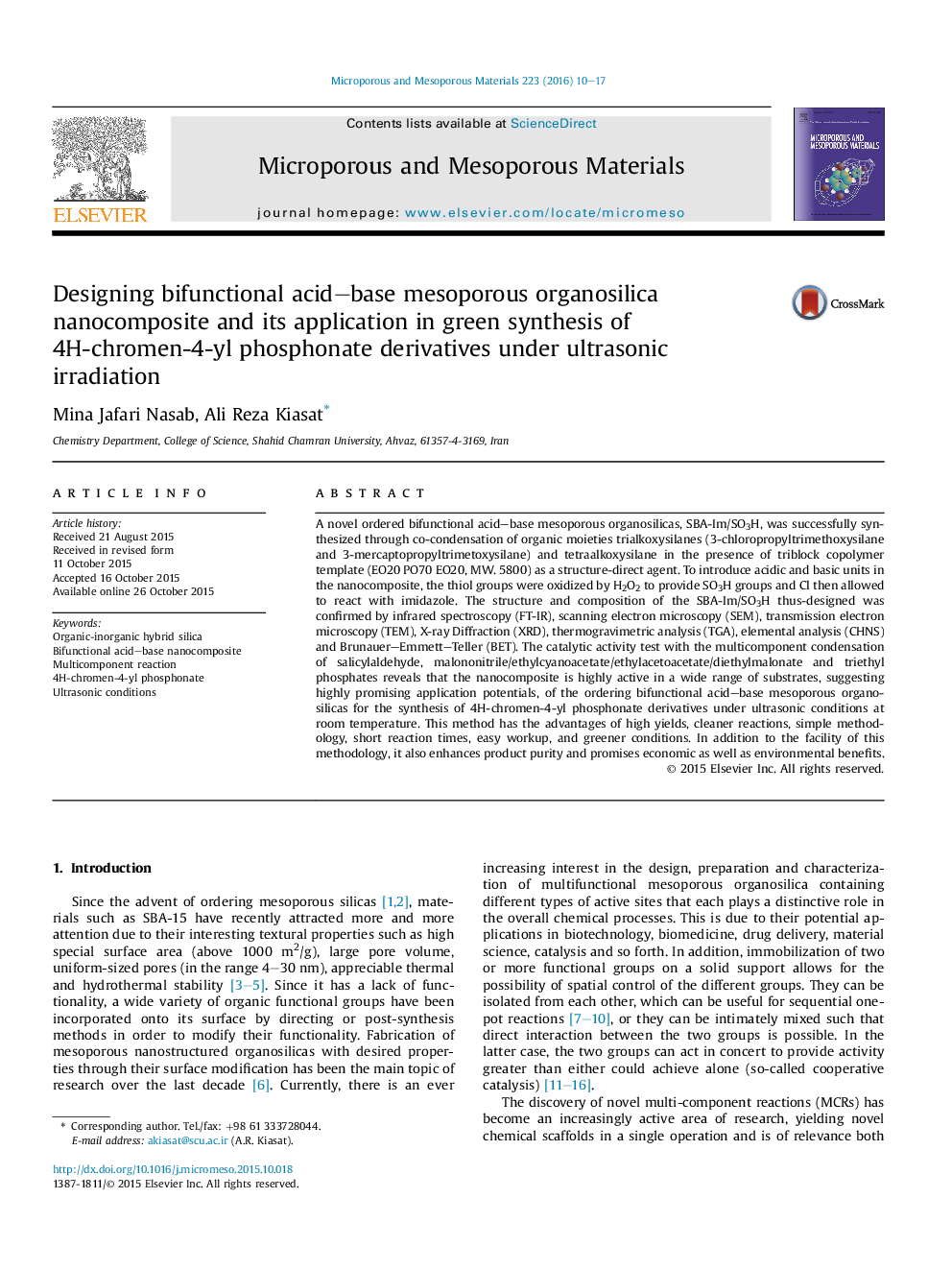| Article ID | Journal | Published Year | Pages | File Type |
|---|---|---|---|---|
| 72271 | Microporous and Mesoporous Materials | 2016 | 8 Pages |
•Synthesis of a novel ordered bifunctional acid–base mesoporous organosilicas.•Organic-inorganic hybrid silica.•Synthesis of 4H-chromen-4-yl phosphonate derivatives under ultrasonic conditions at room temperature.•Multicomponent reaction.
A novel ordered bifunctional acid–base mesoporous organosilicas, SBA-Im/SO3H, was successfully synthesized through co-condensation of organic moieties trialkoxysilanes (3-chloropropyltrimethoxysilane and 3-mercaptopropyltrimetoxysilane) and tetraalkoxysilane in the presence of triblock copolymer template (EO20 PO70 EO20, MW. 5800) as a structure-direct agent. To introduce acidic and basic units in the nanocomposite, the thiol groups were oxidized by H2O2 to provide SO3H groups and Cl then allowed to react with imidazole. The structure and composition of the SBA-Im/SO3H thus-designed was confirmed by infrared spectroscopy (FT-IR), scanning electron microscopy (SEM), transmission electron microscopy (TEM), X-ray Diffraction (XRD), thermogravimetric analysis (TGA), elemental analysis (CHNS) and Brunauer–Emmett–Teller (BET). The catalytic activity test with the multicomponent condensation of salicylaldehyde, malononitrile/ethylcyanoacetate/ethylacetoacetate/diethylmalonate and triethyl phosphates reveals that the nanocomposite is highly active in a wide range of substrates, suggesting highly promising application potentials, of the ordering bifunctional acid–base mesoporous organosilicas for the synthesis of 4H-chromen-4-yl phosphonate derivatives under ultrasonic conditions at room temperature. This method has the advantages of high yields, cleaner reactions, simple methodology, short reaction times, easy workup, and greener conditions. In addition to the facility of this methodology, it also enhances product purity and promises economic as well as environmental benefits.
Graphical abstractFigure optionsDownload full-size imageDownload as PowerPoint slide
